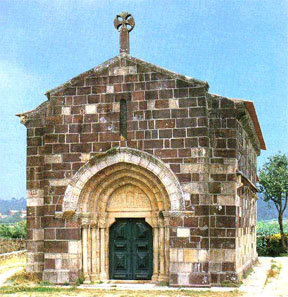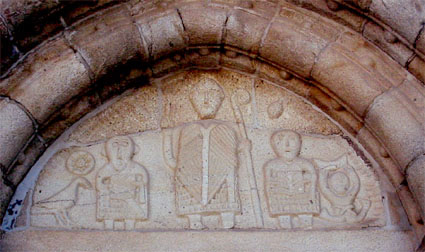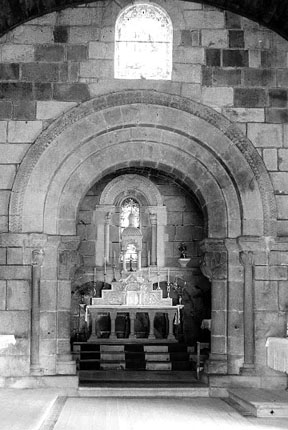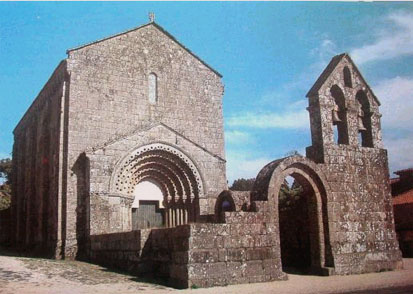




Index
| Romanesque - 2 | |||||||||||||||||||||||||||||||
| Another important Romanesque church is Saint Christopher of Rio Mau, near Oporto, all that is left of a benedictine monastery founded in the 11th century. Construction on the present church of Rio Mau began around 1151, according to an inscription found in the building. The sculptural decoration of the church is very important in understanding the influences on Portuguese Romanesque. The main chapel, which is the oldest part of the church, reflects Galician influence, while the portals show the more mainstream, so called "Benedictine" Romanesque motifs. | |||||||||||||||||||||||||||||||
 |
|||||||||||||||||||||||||||||||
| Left - Main fa�ade of the church of Rio Mau. This part of the building was the last to be finished, perhaps in the begining of the 13th century. The fa�ade and most of the nave show the hand of a inexpert architect, in striking constrast to the main chapel. | |||||||||||||||||||||||||||||||
 |
|||||||||||||||||||||||||||||||
| Right - Pendiment of the main portal of Rio Mau. This is one of the few Portuguese Romanesque tympani containing human figures, which here have a very rigid and primitive design. It might be a 11th century work reutilised in this church or, more likely, be contemporary to the fa�ade, i.e., late 12th century. The central figure is a bishop holding a crozier and blessing with his right hand. It is likely a representation of Saint Augustine. He is accompained by two shorter persons holding the Bible, and by two other misterious figures. On the left there is a bird (an eagle?) with the sun over its head, and on the right there is a siren with two tails holding the moon. The sun and the moon are attributes of Saint Augustine. | |||||||||||||||||||||||||||||||
 |
|||||||||||||||||||||||||||||||
| Left - The main chapel of Rio Mau started being built in 1151 and is beautiful in its proportions and decoration. It is covered by stone vaulting, while the one-aisled nave has a wooden roof. The main chapel was erected in a building campaign totally independent from the rest of the church. | |||||||||||||||||||||||||||||||
 |
|||||||||||||||||||||||||||||||
| Right - The big capitals of the main chapel display several motifs, all executed by a real master sculptor. There are vegetal, geometrical, animal and human figures represented. The meaning of the images is nevertheless very obscure. The image above shows a capital of the triumphal arch. Two bearded men appear holding another person. At the right face of the capital (not seen) a man plays a string instrument, indicating that the scene might be a part of a story told by minstrels. | |||||||||||||||||||||||||||||||
| The church of Saint Peter of Ferreira, near Oporto, is also all that is left of an ancient monastery. It was built in the last decades of the 12th century, and shows artistic influences of several places. Like the church of Rio Mau, the church of Ferreira has a very simple plan, with one aisle and a main chapel, but it was executed by a group of homogenous, high quality artisans. | |||||||||||||||||||||||||||||||
 |
|||||||||||||||||||||||||||||||
| Left - The Romanesque church of Ferreira is one of the few in Portugal to have a partially preserved entrance hall (narthex), which was built a bit later than the church itself. The narthex was often used for burials in mediaeval times. The main portal of the church is placed onto a advanced body of the fa�ade. | |||||||||||||||||||||||||||||||
| Page 3 Index |
|||||||||||||||||||||||||||||||